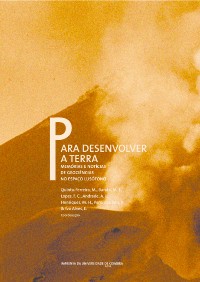Please use this identifier to cite or link to this item:
https://hdl.handle.net/10316.2/31464| Title: | Espécies vegetaismetalotolerantes e sua potencial utilização na prospeção biogeoquímica e recuperação ambiental (minas de Fragas do Cavalo, Oleiros, Portugal central) | Other Titles: | Metalotolerant plant species and their potential in biogeochemical prospecting and environmental restoration (Fragas do Cavalo old mine, Oleiros, central Portugal) | Authors: | Pratas, J. Favas, P. J. C. Conde, L. |
Keywords: | Bioaccumulation;Bioindicating;Heavy metals;Arsenic;Revegetation;Bioacumulação;Bioindicação;Metais pesados;Arsénio;Revegetação | Issue Date: | 2012 | Publisher: | Imprensa da Universidade de Coimbra | Journal: | http://hdl.handle.net/10316.2/24404 | Abstract: | Biogeochemical prospecting and the environmental control in highly polluted
areas presume the correct selection of the biogeochemical material for sampling and the
interpretation of the analytical results that takes into account the physiological mechanisms
of plant adaptation and, in particular, the pedogeochemical phenomena. In this work, the
species present in soils and tailings with important W, As and some Cu contamination in
the old mining area of Fragas do Cavalo (Oleiros, Castelo Branco, Central Portugal) have
been characterised. The species were selected envisaging their use as bioindicators, meaning
that they are able to detect the pollution present in soils for use in mineral exploration; and
seeking their potential use in the restoration with metalotolerant species able to tolerate the
geochemical stress imposed by these conditions. A prospecção biogeoquímica e o controlo ambiental de áreas fortemente poluídas pressupõem uma correta seleção do material biológico a amostrar e uma interpretação dos resultados analíticos que tenha em conta os mecanismos fisiológicos de adaptação das plantas e, fundamentalmente, os fenómenos pedogeoquímicos. Neste trabalho, caracterizaram‑se as espécies presentes relativamente à sua capacidade de acumularem metais pesados e metaloides num ambiente com importantes contaminações de W, As e algum Cu, na antiga área mineira de Fragas do Cavalo (Oleiros, Castelo Branco, Portugal Central). Essa caracterização permitiu definir algumas espécies que poderão ser selecionadas como bioindicadoras, ou seja, capazes de detectar a poluição presente no solo, tendo em vista a sua aplicação à prospecção mineira, bem como possibilidade da sua utilização na revegetação dado serem espécies metalotolerantes capazes de suportar a tensão geoquímica imposta por tais condições. |
URI: | https://hdl.handle.net/10316.2/31464 | ISBN: | 978-989-26-0531-9 (PDF) | DOI: | 10.14195/978-989-26-0531-9_30 | Rights: | open access |
| Appears in Collections: | Para desenvolver a Terra: memórias e notícias de Geociências no espaço lusófono |
Files in This Item:
| File | Description | Size | Format | |
|---|---|---|---|---|
| 30-para_desenvolver_a_terra_artigo..pdf | 1.19 MB | Adobe PDF |  |
Items in DSpace are protected by copyright, with all rights reserved, unless otherwise indicated.
